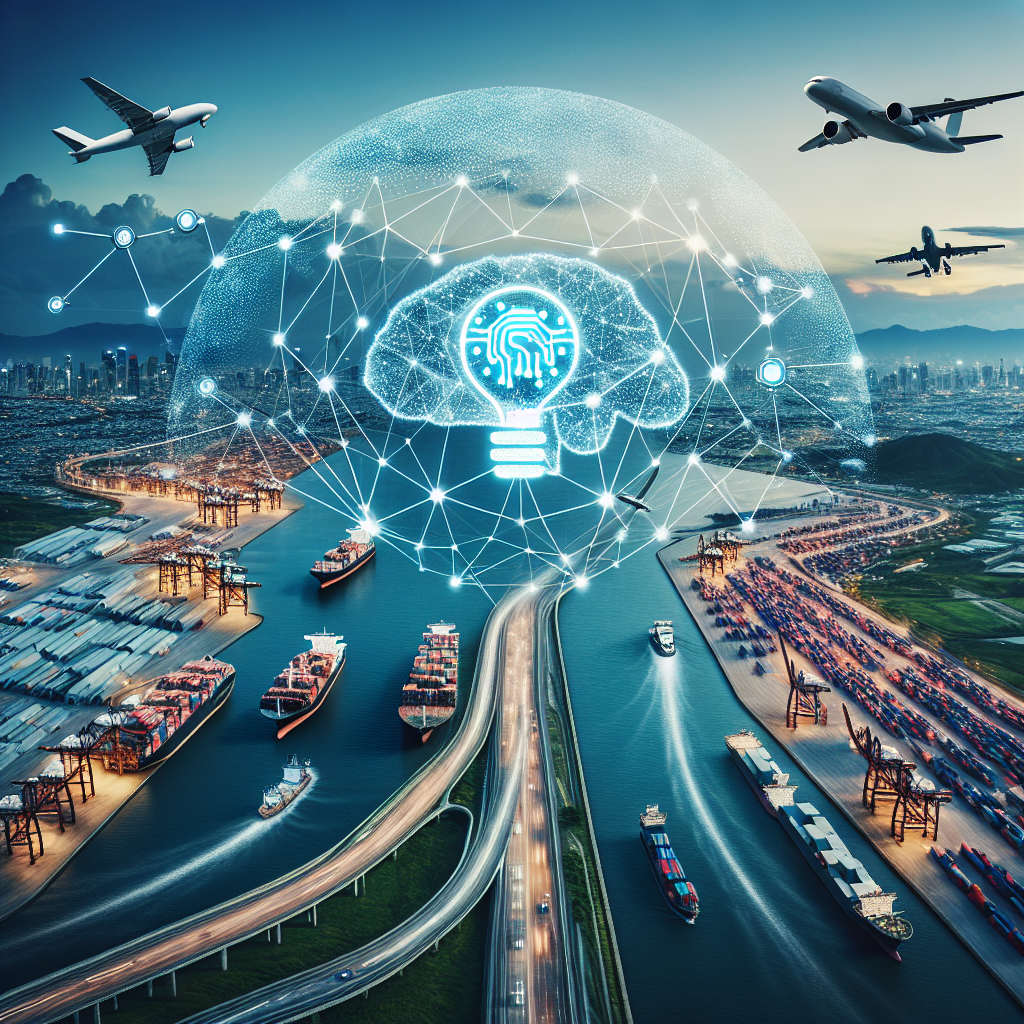The Integration of AI and IoT in Transportation and Logistics
In recent years, the transportation and logistics industry has seen a significant transformation with the integration of artificial intelligence (AI) and Internet of Things (IoT) technologies. These advancements have brought about greater efficiency, cost savings, and improved customer experiences. In this article, we will explore how AI and IoT are being integrated into the transportation and logistics sector and the benefits they bring.
AI and IoT in Transportation and Logistics
AI and IoT technologies are being used in various aspects of transportation and logistics, including fleet management, route optimization, predictive maintenance, and supply chain management. These technologies work together to collect and analyze vast amounts of data in real-time, enabling companies to make better decisions and improve operations.
One of the key applications of AI and IoT in transportation and logistics is in fleet management. By equipping vehicles with IoT sensors and devices, companies can monitor the location, speed, and condition of their vehicles in real-time. AI algorithms can analyze this data to optimize routes, reduce fuel consumption, and improve overall fleet efficiency. This not only saves costs but also reduces the carbon footprint of the company.
Route optimization is another area where AI and IoT are making a big impact. By using historical data, weather forecasts, and traffic information, AI algorithms can suggest the most efficient routes for vehicles to take. This helps to reduce delivery times, minimize fuel consumption, and improve customer satisfaction. Companies can also use AI-powered predictive maintenance systems to monitor the health of their vehicles and equipment, allowing them to schedule maintenance before a breakdown occurs.
Supply chain management is another area where AI and IoT technologies are being used to improve efficiency. By tracking the movement of goods in real-time, companies can identify bottlenecks in the supply chain and make adjustments to improve the flow of goods. AI algorithms can also analyze demand forecasts and inventory levels to optimize inventory management and reduce stockouts.
Benefits of AI and IoT in Transportation and Logistics
The integration of AI and IoT in transportation and logistics brings a number of benefits to companies in the industry. Some of the key benefits include:
1. Improved efficiency: By optimizing routes, reducing fuel consumption, and improving fleet management, companies can achieve greater efficiency in their operations. This leads to cost savings and improved profitability.
2. Enhanced customer experience: AI and IoT technologies help companies to provide better customer service by offering real-time tracking of shipments, accurate delivery estimates, and improved communication with customers.
3. Reduced environmental impact: By optimizing routes and reducing fuel consumption, companies can reduce their carbon footprint and contribute to a more sustainable environment.
4. Predictive maintenance: AI-powered predictive maintenance systems help companies to minimize downtime and reduce maintenance costs by identifying potential issues before they occur.
5. Improved decision-making: By analyzing vast amounts of data in real-time, companies can make better decisions and respond quickly to changes in the market.
FAQs
Q: How are AI and IoT technologies being integrated into transportation and logistics?
A: AI and IoT technologies are being integrated into transportation and logistics by equipping vehicles and equipment with IoT sensors and devices to collect data in real-time. AI algorithms then analyze this data to optimize routes, improve fleet management, and enhance supply chain management.
Q: What are some of the key benefits of integrating AI and IoT in transportation and logistics?
A: Some of the key benefits of integrating AI and IoT in transportation and logistics include improved efficiency, enhanced customer experience, reduced environmental impact, predictive maintenance, and improved decision-making.
Q: How can companies in the transportation and logistics industry get started with AI and IoT integration?
A: Companies in the transportation and logistics industry can start by conducting a thorough assessment of their current operations and identifying areas where AI and IoT technologies can bring the most value. They can then work with technology partners to implement these technologies and train their employees on how to use them effectively.
In conclusion, the integration of AI and IoT technologies in transportation and logistics is revolutionizing the industry by improving efficiency, reducing costs, and enhancing customer experiences. Companies that embrace these technologies and leverage them effectively will be well-positioned to succeed in the rapidly evolving transportation and logistics landscape.

